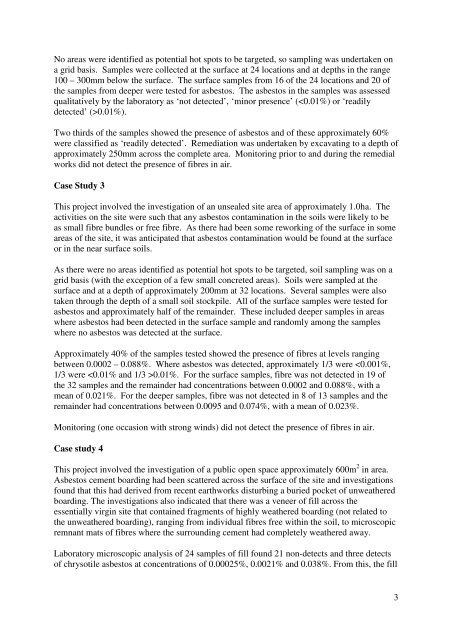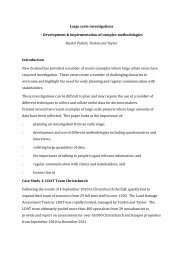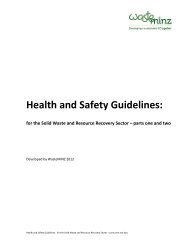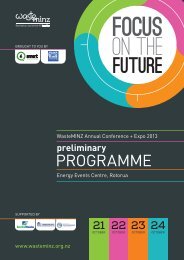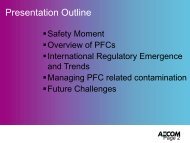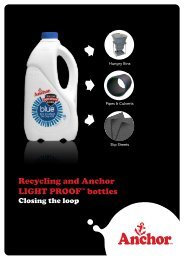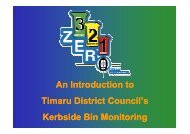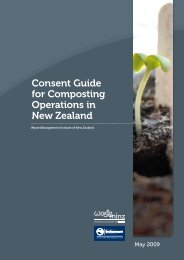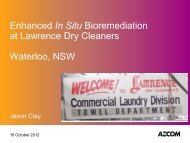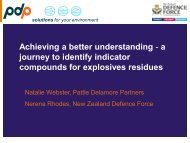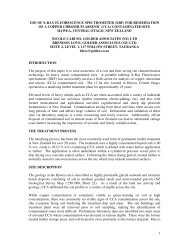Chris Hillman - WasteMINZ
Chris Hillman - WasteMINZ
Chris Hillman - WasteMINZ
- No tags were found...
You also want an ePaper? Increase the reach of your titles
YUMPU automatically turns print PDFs into web optimized ePapers that Google loves.
No areas were identified as potential hot spots to be targeted, so sampling was undertaken on<br />
a grid basis. Samples were collected at the surface at 24 locations and at depths in the range<br />
100 – 300mm below the surface. The surface samples from 16 of the 24 locations and 20 of<br />
the samples from deeper were tested for asbestos. The asbestos in the samples was assessed<br />
qualitatively by the laboratory as ‘not detected’, ‘minor presence’ (0.01%).<br />
Two thirds of the samples showed the presence of asbestos and of these approximately 60%<br />
were classified as ‘readily detected’. Remediation was undertaken by excavating to a depth of<br />
approximately 250mm across the complete area. Monitoring prior to and during the remedial<br />
works did not detect the presence of fibres in air.<br />
Case Study 3<br />
This project involved the investigation of an unsealed site area of approximately 1.0ha. The<br />
activities on the site were such that any asbestos contamination in the soils were likely to be<br />
as small fibre bundles or free fibre. As there had been some reworking of the surface in some<br />
areas of the site, it was anticipated that asbestos contamination would be found at the surface<br />
or in the near surface soils.<br />
As there were no areas identified as potential hot spots to be targeted, soil sampling was on a<br />
grid basis (with the exception of a few small concreted areas). Soils were sampled at the<br />
surface and at a depth of approximately 200mm at 32 locations. Several samples were also<br />
taken through the depth of a small soil stockpile. All of the surface samples were tested for<br />
asbestos and approximately half of the remainder. These included deeper samples in areas<br />
where asbestos had been detected in the surface sample and randomly among the samples<br />
where no asbestos was detected at the surface.<br />
Approximately 40% of the samples tested showed the presence of fibres at levels ranging<br />
between 0.0002 – 0.088%. Where asbestos was detected, approximately 1/3 were


